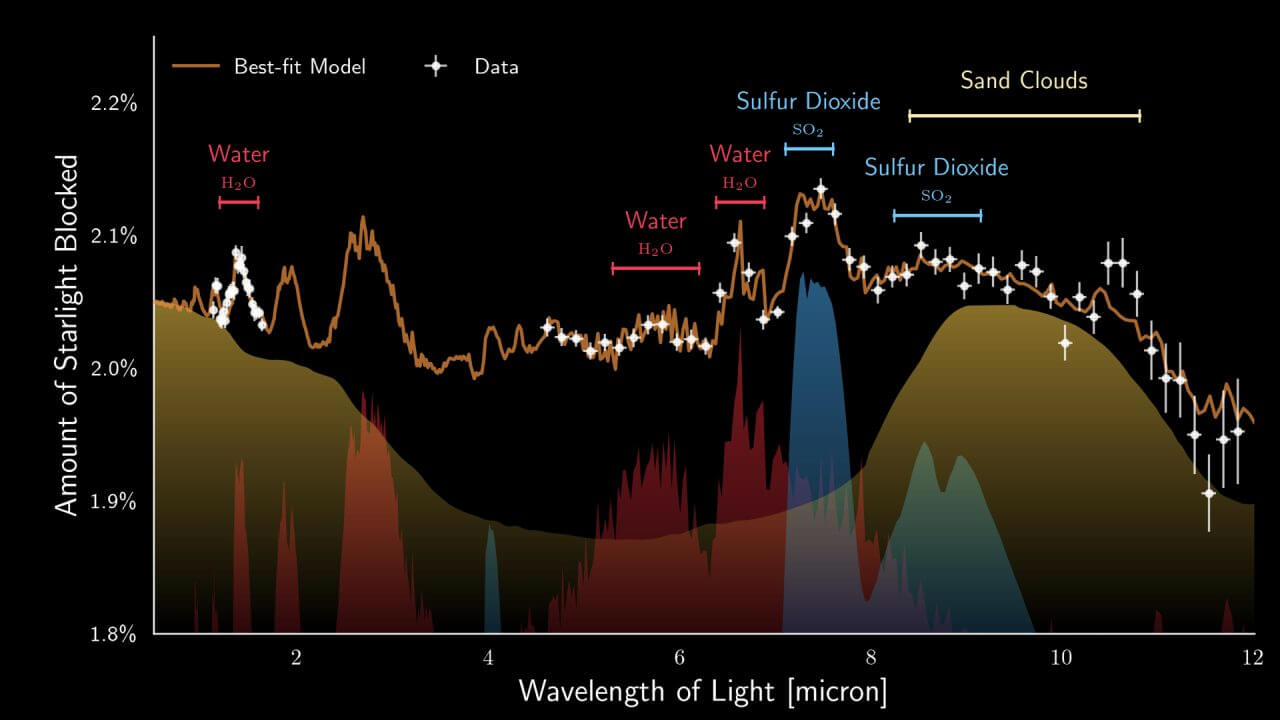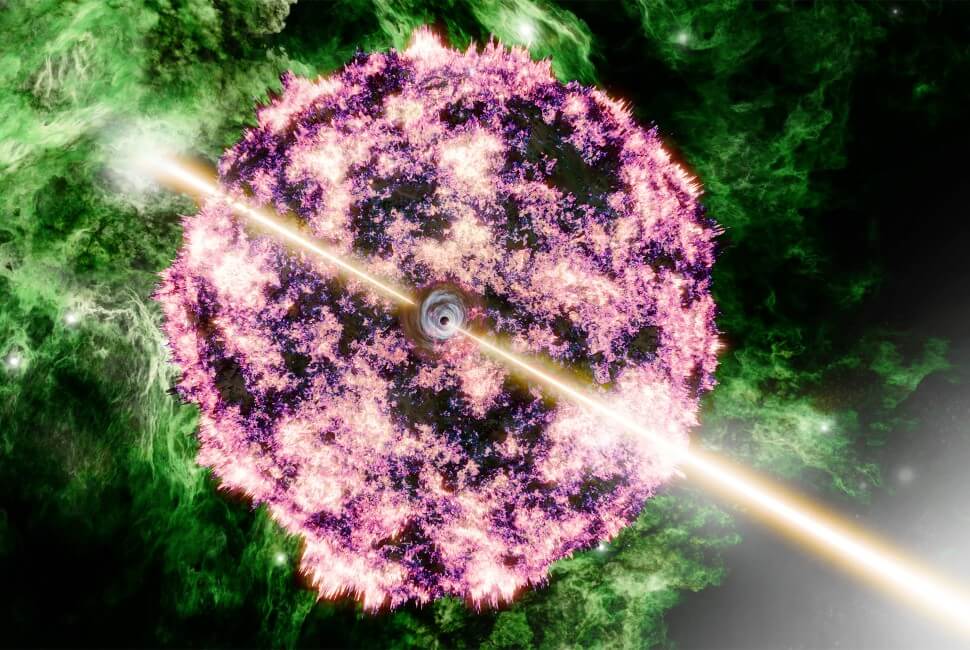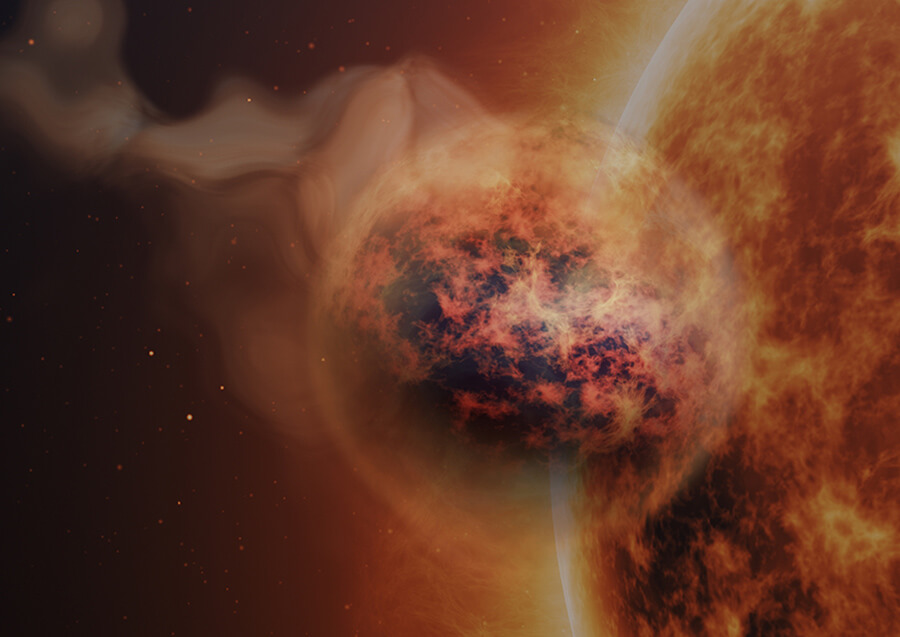It expands due to the heat of the star.WASP-107B“It is one of the exoplanets whose atmosphere composition can easily be observed in detail. An international research team led by Achrène Dyrek of the University of Paris City has identified WASP-107b asJames Webb Space Telescope“And obtained the most detailed atmospheric composition data to date. The remarkable discovery is just thatDetection of sulfur dioxide and sand grains, but no methane gas detectionThese rewrite traditional planetary models.
[▲الشكل 1: انطباع الفنان عن WASP-107b، الذي يتوسع غلافه الجوي بسبب درجات الحرارة المرتفعة من النجم WASP-107. (مصدر الصورة: مدرسة LUCA للفنون (بلجيكا) – كلاس فيربويست (صور) ويوهان فان لوفرين (طباعة) ) )]]
■WASP-107b is a “thin planet” suitable for observing the atmosphere
Among the exoplanets orbiting celestial bodies other than the Sun, some have been found to have environments never before seen in the solar system. Examples include celestial bodies such as Neptune and Jupiter that orbit close to their stars. Because these planets are so close to their stars, their surfaces warm to more than several hundred degrees Celsius, and their average densities are very low due to the thermal expansion of their entire atmospheres. Such a planet is sometimes referred to as a “puffy planet” (literally translated as “thin planet”).
Such low-density planets are important for research into the composition of their atmospheres. To explore the atmosphere of a distant planet, we can examine the absorption spectra that appear depending on the type of light particles passing through the atmosphere. (※1) It must be analyzed and identified. Observational data for low-density planets contain more information about the lower atmosphere than for high-density planets, so they are useful for estimating the overall composition of gas-based planets and considering their formation and evolution. This will serve as an important guide to understanding.
*1…When light from a celestial body is analyzed by wavelength, the part that is significantly darker than other wavelengths is called the absorption spectrum. Absorption spectra appear because each molecule absorbs light at a specific wavelength, and the type of molecule can be determined by back-calculating from the absorption spectrum.
It was discovered in 2017,WASP-107B“It is just one such planet. Compared to Jupiter, WASP-107b has about the same diameter but only one-tenth its mass, giving it an average density of just 0.2 grams per cubic centimeter, comparable to cork. WASP-107b is a solar system Suitable for detailed observations of the atmosphere due to its relatively short distance from Earth, about 200 light-years, and the brightness of the star “WASP-107” around which WASP-107b orbits, which is listed as follows: An exoplanet.
Based on observations so far, WASP-107b has “sulfur dioxide“It was assumed to exist, but at the same time doubts were raised about this discovery. Previous planetary science models showed that sulfur dioxide can be absorbed by light in the atmosphere at temperatures above 930 degrees Celsius.Photochemical reactionOn the other hand, it was also believed that sulfur dioxide is not produced at temperatures below approximately 730°C, but instead sulfur allotropes are produced, and that these allotropes have an absorption spectrum similar to that of sulfur dioxide. Sulfur oxide. In fact, the temperature in WASP-107b’s upper atmosphere is about 470 degrees Celsius, much lower than the estimated temperature for sulfur dioxide formation.
■ Details of the atmosphere of planet WASP-107b observed using the James Webb Space Telescope

[▲Figure2:AdiagramshowingtheabsorptionspectrumofWASP-107binthemid-infraredregionSulfurdioxidesandcloudsandwatervaporweredetectedbutmethanegaswasnotdetected(Imagesource:MichelminEuropeanMIRIEXOGTOteamESAandNASA)[▲الشكل2:رسمتخطيطييوضحطيفالامتصاصلـWASP-107bفيمنطقةالأشعةتحتالحمراءالمتوسطةتماكتشافثانيأكسيدالكبريتوالسحبالرمليةوبخارالماء،ولكنلميتماكتشافغازالميثان(مصدرالصورة:ميشيلمين،فريقMIRIEXOGTOالأوروبي،وكالةالفضاءالأوروبيةووكالةناسا)
An international research team led by Derek has observed WASP-107b using the Webb Space Telescope and obtained more accurate atmospheric data than ever before. The Mid-Infrared Instrument (MIRI) on board the Webb Space Telescope is a spectrograph suitable for capturing many molecules, including sulfur dioxide.
As a result of observation firstObservational evidence that sulfur dioxide definitely existsI got it. This is also evidence of photochemical reactions occurring in the atmosphere of planet WASP-107b. This is the second planet on which photochemical reactions have been proven, after WASP-39b, and observational evidence for both has been obtained through the Webb Space Telescope.
In addition, the absorption spectrum of WASP-107b, which indicates the presence of sulfur dioxide and water vapor, was cloudy and unclear. This is not a metaphor, and it is believed that actual clouds obscure the absorption spectrum. During this observation, we had a rare opportunity to measure cloud formation.Clouds are made of silicatesI discovered it.
Silicates are the main components of the rocks and sand we are familiar with on Earth, so this indicates the presence of sand clouds in the upper atmosphere of the planet WASP-107b. This is a surprising discovery. We learned that just as water evaporates on Earth and forms clouds of water vapor, silicates in the lower atmosphere evaporate on hot planets and form sand clouds. However, temperatures above 1,000°C were previously thought to be necessary for sand clouds to rise into the upper atmosphere. As mentioned earlier, the temperature in the upper atmosphere of WASP-107b is about 470 degrees Celsius.The interior of WASP-107b is much hotter than that, and there is strong atmospheric circulation that mixes the lower and upper parts of the atmosphere sufficiently.It shows that.
Further evidence of high temperatures inside WASP-107b and strong thermal cycling is the lack of methane being detected. Methane heats the atmosphere as a greenhouse gas, but it decomposes in the presence of high enough temperatures and strong light. The reason methane was not detected even with the highly sensitive Webb Space Telescope is that light of sufficient intensity reached WASP-107b’s lower atmosphere, and the interior was heated to high temperatures, triggering the detection of methane. It was dismantled. The lack of methane detection, combined with the detection of sand clouds, provides evidence of intense atmospheric circulation on WASP-107b.
Observations of WASP-107b by the Webb Space Telescope show that traditional planetary science models cannot adequately explain the phenomenon and require modifications.
source
Written by Riri Aya

“Travel maven. Beer expert. Subtly charming alcohol fan. Internet junkie. Avid bacon scholar.”






More Stories
The brightest gamma-ray burst in history turned out to be an ordinary supernova
Will it be the final display Qidi Vida |
An IRC client running on your motherboard's UEFI is born – Livedoor News